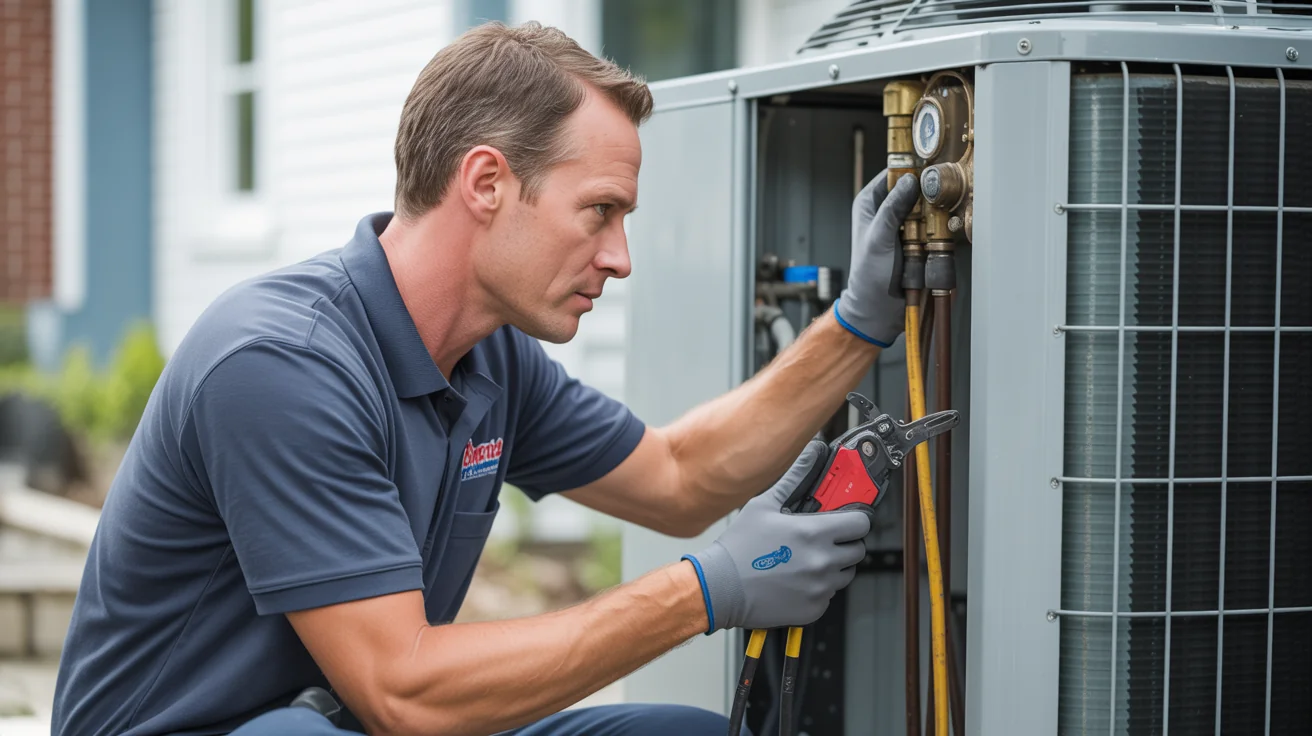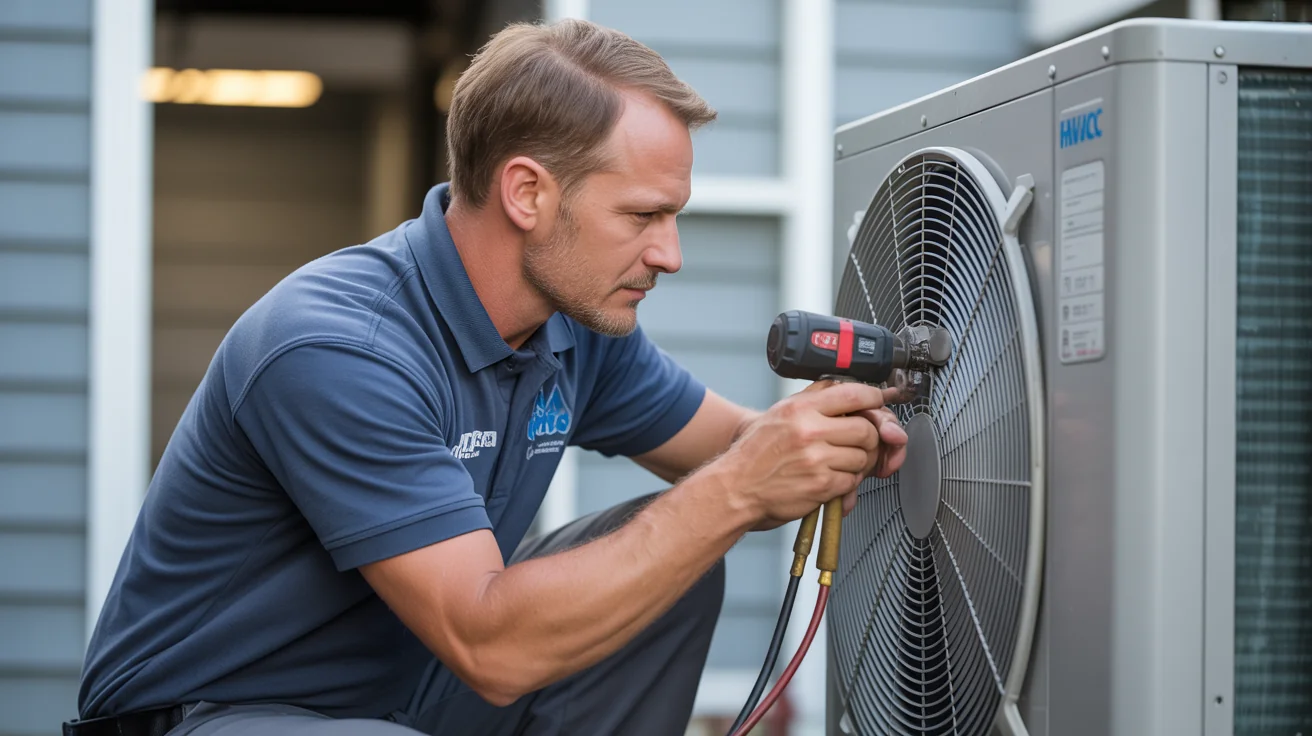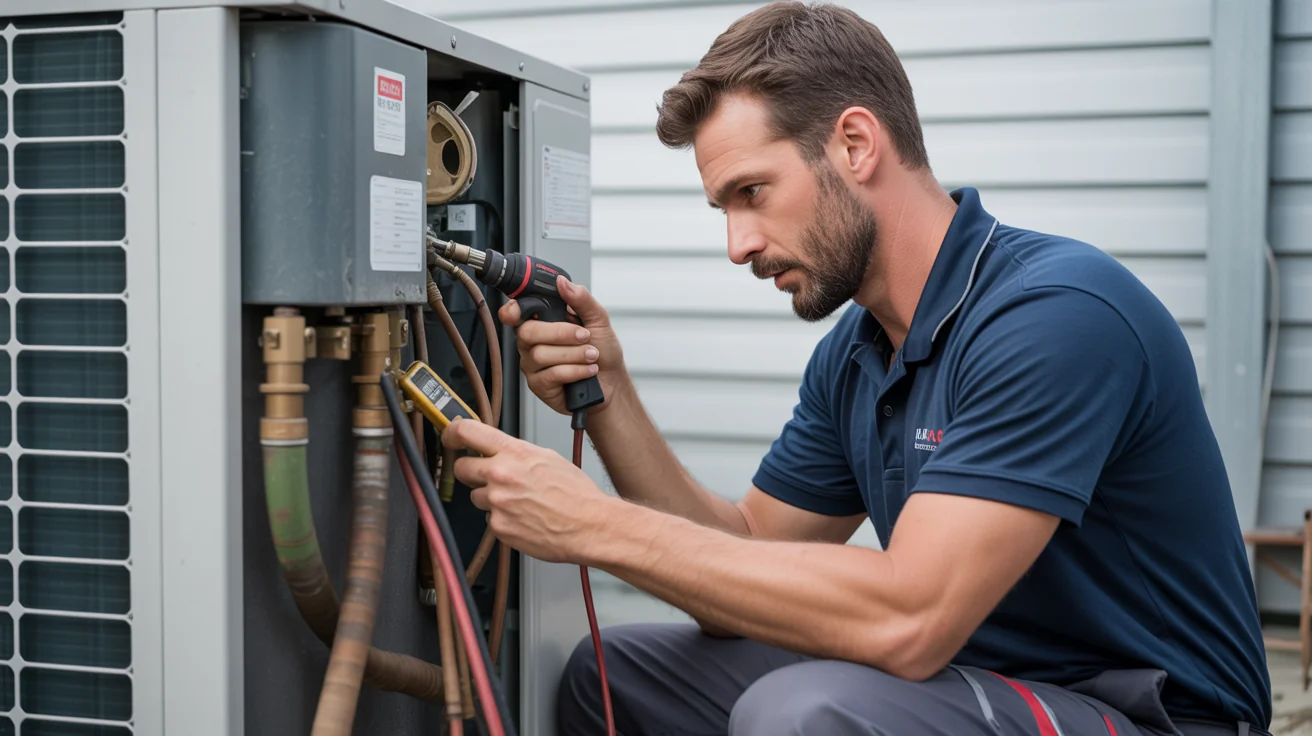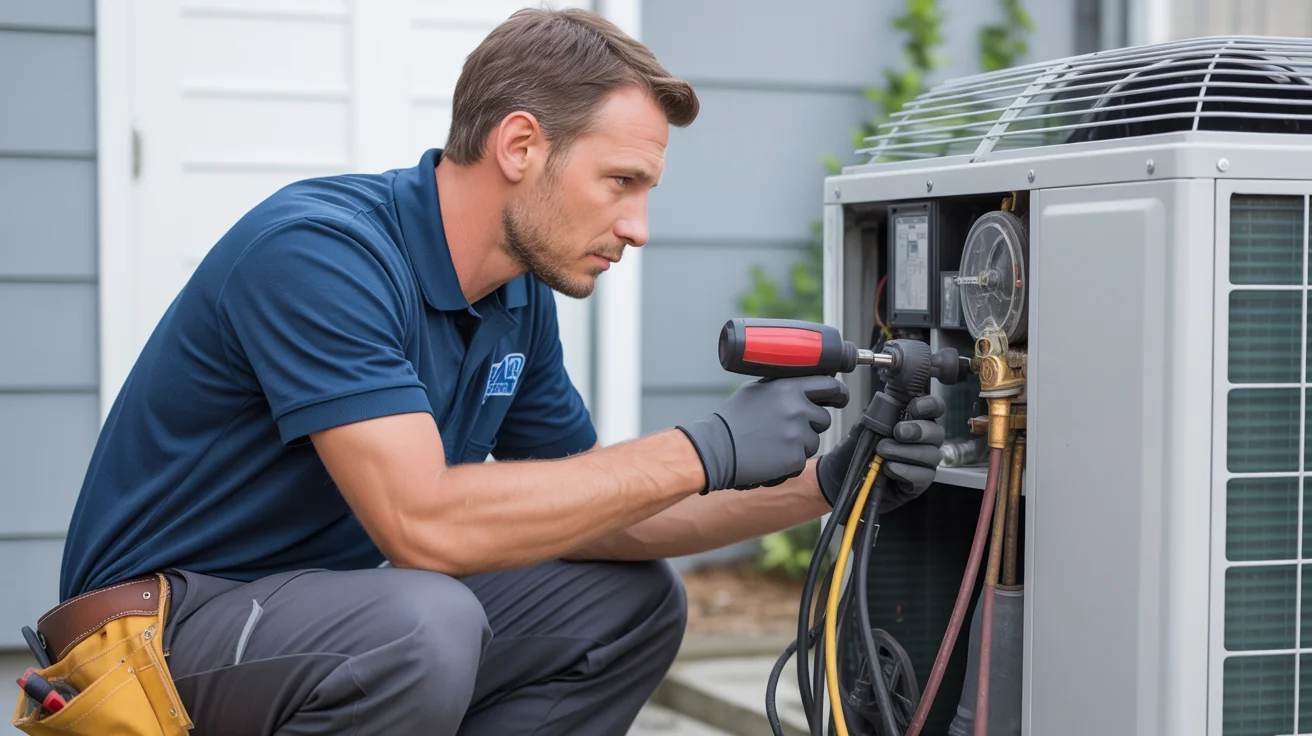AC Frozen Solid Emergency Steps Do This Now
AC unit frozen? These immediate safety steps prevent compressor damage and $3000+ repairs. What to do in the first 15 minutes matters most.

- Your AC Looks Like an Ice Sculpture - Here’s What to Do RIGHT NOW
- The 15-Minute Emergency Response (Do These in Order)
- While You Wait for Help: The Thawing Process
- Red Alert Situations - Call 911 or Leave Immediately
- What Actually Caused This Mess?
- The Real Cost of Ignoring the Problem
- Your Prevention Checklist (So This Never Happens Again)
- Emergency FAQ - Quick Answers When You’re Panicking
+ 1 more sections below...
- Your AC Looks Like an Ice Sculpture - Here’s What to Do RIGHT NOW
- The 15-Minute Emergency Response (Do These in Order)
- While You Wait for Help: The Thawing Process
- Red Alert Situations - Call 911 or Leave Immediately
- What Actually Caused This Mess?
- The Real Cost of Ignoring the Problem
- Your Prevention Checklist (So This Never Happens Again)
- Emergency FAQ - Quick Answers When You’re Panicking
+ 1 more sections below...
Your AC Looks Like an Ice Sculpture - Here’s What to Do RIGHT NOW
Got a text from my buddy Mike at 11:47 last night. Picture attached. His AC unit looked like someone dumped a slushie machine on it. “Is this bad?” he asked.
Yeah Mike, it’s bad. But what he did next saved him $2,800 in compressor damage.
Look, I handle frozen AC emergencies every single day during Texas summers. Last Tuesday alone - six calls before lunch. The difference between a $400 fix and a $4,000 replacement? What you do in the next 15 minutes.
Here’s exactly what to do when you discover your AC is frozen. Not tomorrow. Not after you finish your coffee. Right now.
The 15-Minute Emergency Response (Do These in Order)
Step 1: TURN OFF THE AC IMMEDIATELY (0-30 seconds)
Walk to your thermostat. Switch it to OFF. Not “fan only.” OFF.
I don’t care if it’s 105 degrees outside. Running a frozen system is like driving your car with no oil - every second causes more damage. That ice is blocking airflow, and your compressor is working itself to death trying to push refrigerant through frozen coils.
Why this matters: Your compressor costs $1,800-3,500 to replace. Running it frozen for 30 minutes can destroy it completely. I’ve seen it happen 47 times this summer alone.
Step 2: Turn the Fan to ON (30-60 seconds)
After switching the system OFF, flip your fan setting from AUTO to ON. This keeps air moving over the frozen coil to help it thaw faster.
The fan alone won’t hurt anything - it’s just moving air, not trying to cool. Think of it like a hair dryer on cool setting pointed at ice cubes.
Step 3: Check Your Breaker Box (1-2 minutes)
Head to your electrical panel. Find the breaker labeled “AC” or “Air Handler.” Has it tripped? If yes, that’s actually good news - your system protected itself.
DO NOT flip it back on yet. Leave it off. A tripped breaker with a frozen coil usually means serious electrical issues. Last week I had a customer flip theirs back on three times. Fried the control board. $800 mistake.
Step 4: Document Everything With Photos (2-3 minutes)
Grab your phone. Take pictures of:
- The frozen coil (get close)
- Your thermostat settings
- The outdoor unit (is there ice on the copper lines?)
- Any error codes on your system
- Water puddles or damage
These photos help me diagnose the problem before I even arrive. Plus, if you need an insurance claim for water damage, you’ll want documentation.
Step 5: Clear the Drain Pain Access (3-5 minutes)
Find your AC drain line - usually a white PVC pipe near your indoor unit. Put towels and a bucket under it. When that ice melts, you’re looking at gallons of water.
Mrs. Henderson in Frisco didn’t do this step. The meltwater overflowed her drain pan at 2 AM. Ruined her hallway ceiling. $3,200 in drywall repairs.
Step 6: Check and Replace Your Filter (5-7 minutes)
Pull out your air filter. Can you see through it? If it looks like a lint trap from your dryer, there’s your problem. A clogged filter causes 43% of the frozen coils I see.
Replace it if you have a spare. If not, run without one temporarily - it’s better than a completely blocked filter. Just remember to get one ASAP.
Step 7: Open ALL Vents (7-10 minutes)
Walk through your house. Open every single vent, even in rooms you don’t use. I found 12 closed vents at a house in McKinney yesterday. No wonder their coil looked like Elsa got angry.
Closed vents create pressure problems. Your system needs to breathe. Those unused bedrooms? Open the vents. That storage room? Open it.
Step 8: Move Furniture Away From Returns (10-12 minutes)
Check your return air grilles - the big vents that suck air in. Is furniture blocking them? That couch pushed against the wall? That bookshelf covering half the return? Move them at least 6 inches away.
One customer had a new entertainment center delivered. Blocked 80% of their main return. Coil froze within 48 hours.
Step 9: Check Outside Unit (12-14 minutes)
Go outside. Look at your AC unit. Is it:
- Covered in cottonwood fuzz?
- Surrounded by grass clippings?
- Hidden behind overgrown bushes?
Clear everything at least 2 feet away. Your unit needs to breathe just like you do. Spray it gently with a hose if it’s dirty, but spray from the inside out - don’t push debris deeper into the fins.
Step 10: Call for Help (14-15 minutes)
Now you call for professional help. (940) 390-5676 - that’s my direct line for emergencies.
Tell me:
- When you first noticed the problem
- What your thermostat was set to
- If you heard any unusual sounds before it froze
- Whether you’ve had recent work done
- Your filter replacement history
While You Wait for Help: The Thawing Process
It takes 4-24 hours for a frozen coil to completely thaw. Yeah, that long. The thicker the ice, the longer it takes.
What to expect:
- Water. Lots of water. Keep those towels handy.
- Dripping sounds - that’s normal
- Gurgling in the drain line - also normal
- Your house getting warm - sorry, but the AC stays off
DO NOT:
- Use a hair dryer to speed it up (seen fires start this way)
- Chip at the ice (you’ll puncture the coil - $2,000 mistake)
- Turn the AC back on “just to check” (patience, grasshopper)
- Pour hot water on it (thermal shock can crack components)
Red Alert Situations - Call 911 or Leave Immediately
Sometimes a frozen coil is a symptom of something dangerous:
Electrical burning smell: Get out and call 911. Frozen coils can cause electrical components to overheat. I’ve seen two house fires from this.
Refrigerant hissing with chemical smell: That’s a major leak. R-410A isn’t toxic, but it displaces oxygen. Open windows, get fresh air, call immediately.
Breaker won’t stay on: Stop trying. Something’s shorting out. Each attempt damages components more.
Water near electrical panel: Do not touch anything. Water and electricity don’t mix. Call emergency services.
What Actually Caused This Mess?
Quick reality check on why your coil turned into an ice block:
The usual suspects I find:
- Dirty filter (43% of cases)
- Low refrigerant from a leak (31% of cases)
- Blocked vents or returns (18% of cases)
- Failed blower motor (8% of cases)
Yesterday’s emergency call in Plano? Customer hadn’t changed their filter since February. It looked like a wool blanket. System couldn’t breathe, coil temperature dropped below freezing, moisture in the air turned to ice. Classic case.
The Real Cost of Ignoring the Problem
Let me be brutally honest about what happens if you ignore this:
Day 1 of running frozen: Compressor strains, efficiency drops 50%, electric bill spikes
Day 2-3: Compressor overheats, internal damage begins, refrigerant breaks down
Day 4-7: Compressor fails, system shorts out, possible water damage to home
Total damage: $3,000-7,000 in repairs or full system replacement
Compare that to calling me today: $200-600 typical frozen coil service call.
Your Prevention Checklist (So This Never Happens Again)
After I fix your frozen coil, here’s your homework:
Monthly tasks:
- Change that filter (set a phone reminder)
- Check all vents are open
- Look for ice on the outdoor refrigerant lines
Seasonal tasks:
- Spring AC tune-up (catches problems early)
- Clean outdoor unit before summer
- Check drain line is clear
Annual professional service:
- Full system inspection
- Refrigerant level check
- Coil cleaning
- Electrical component testing
Emergency FAQ - Quick Answers When You’re Panicking
Q: Can I run just the heat to thaw it faster? No! Your heat and AC share components. You’ll damage the system.
Q: It’s 102 degrees - can I run it for just 10 minutes? Absolutely not. Ten minutes of running frozen can destroy your compressor. Use fans, open windows, take cold showers - anything but running that frozen AC.
Q: How do I know when it’s fully thawed? No visible ice anywhere, no water still dripping, wait minimum 4 hours after last ice was visible. When in doubt, wait longer.
Q: Why did this happen suddenly? It worked fine yesterday. Freezing usually builds up over days or weeks. You notice it “suddenly” when it finally blocks enough airflow to stop cooling. It’s like heart disease - seems sudden but was building for a while.
Q: Can I prevent water damage while it thaws? Yes - towels under the unit, check every hour, empty drain pan if accessible, run a shop vac on the drain line if you have one.
Get Emergency Help Now
Look, I get it. It’s hot. You’re frustrated. Your house feels like an oven. But making the wrong move now costs thousands later.
Your frozen coil is screaming for help. Listen to it.
For immediate emergency service in North Texas, call (940) 390-5676. We handle frozen coils 24/7 in Frisco, Plano, McKinney, Allen, and surrounding areas.
Don’t let a frozen coil turn into a dead compressor. The next 15 minutes matter.
Gary Musaraj, Lead Technician Jupitair HVAC - North Texas Emergency Response Team Serving DFW Since 2019
Need Professional HVAC Service?
Our certified technicians are ready to help with any HVAC needs in North Texas




